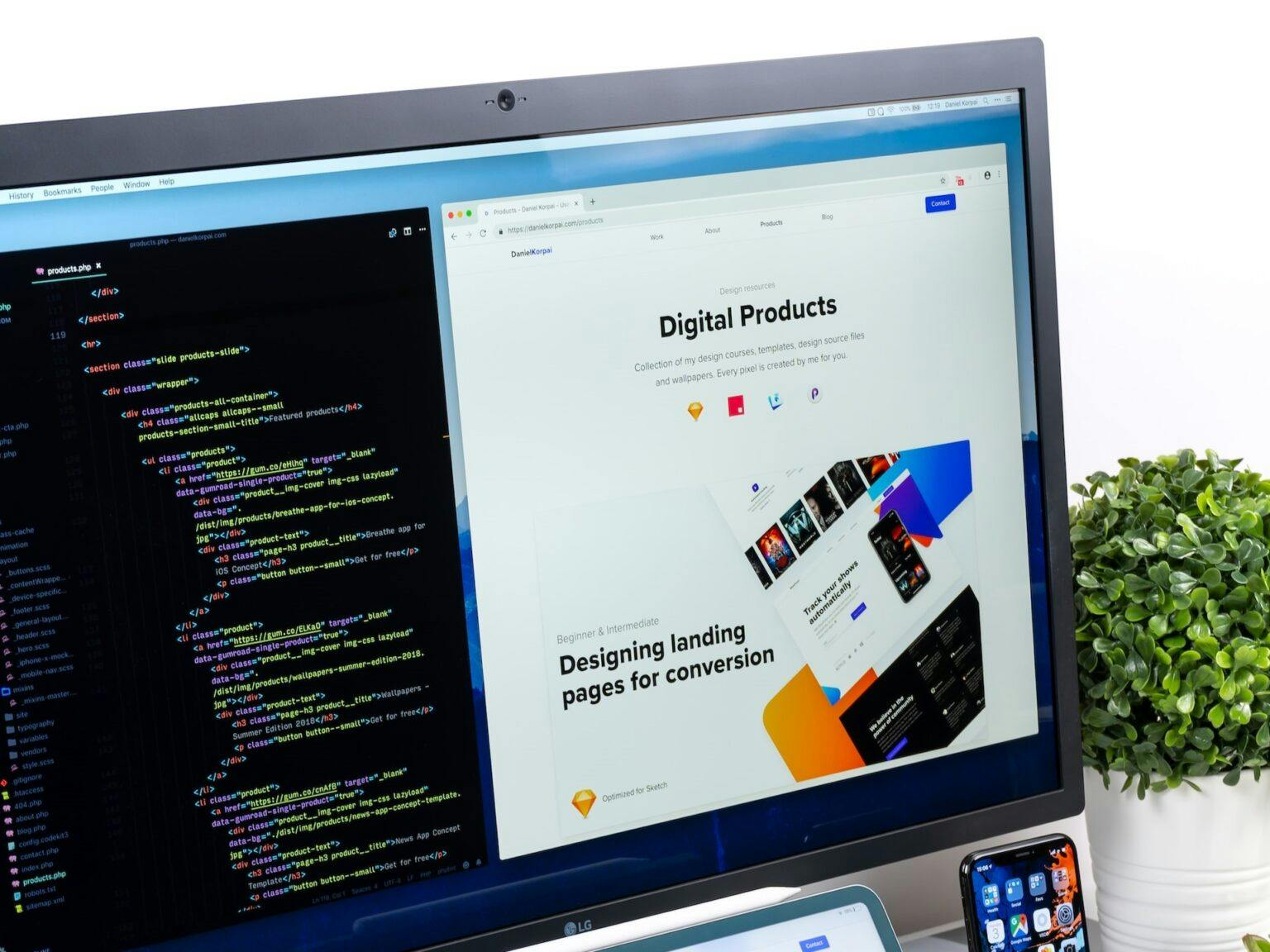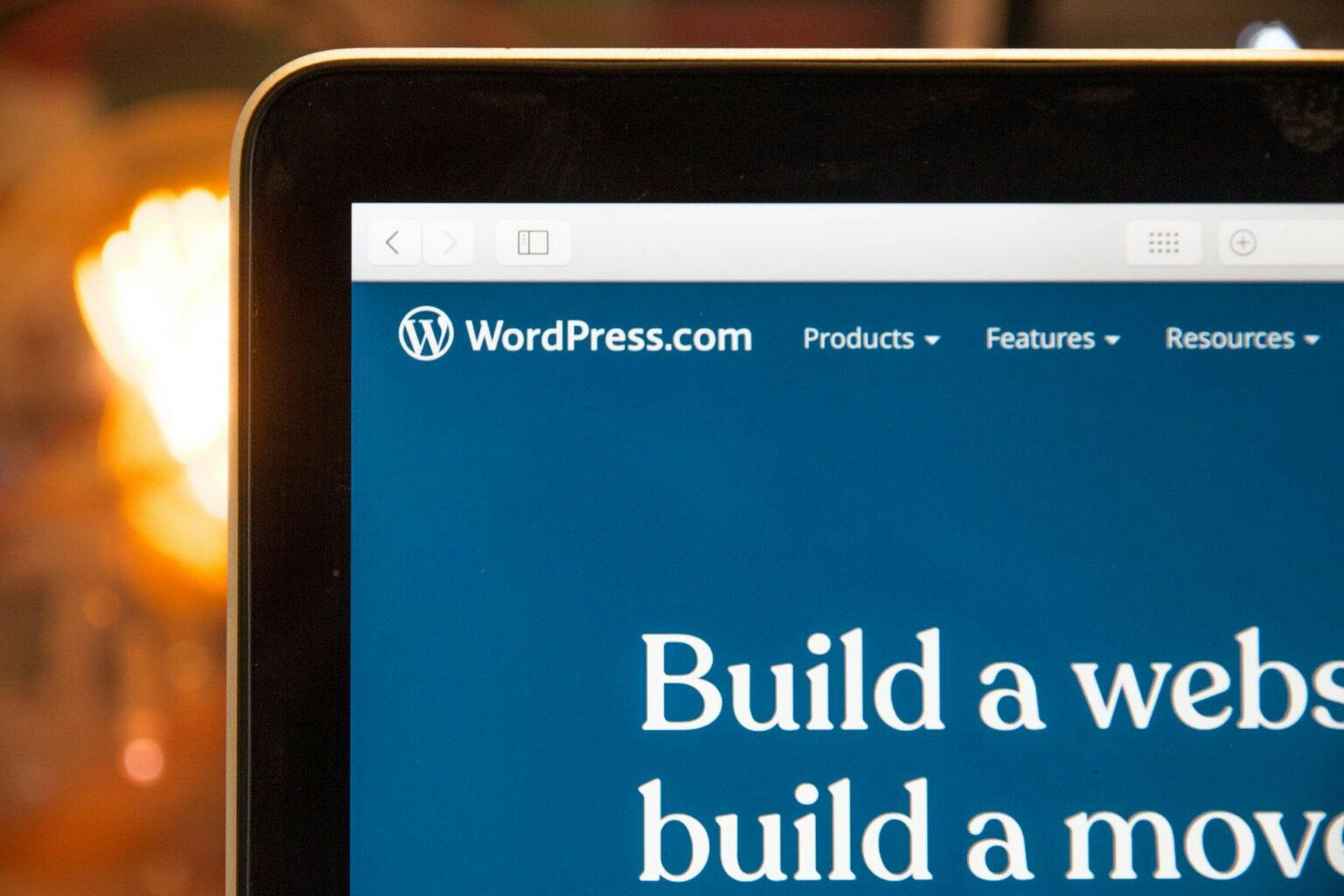Leveraging Headless CMS in Modern Website Design
Published March 11, 2024 by Devin Jackson
Staying abreast of modern design trends and technologies is paramount to creating engaging and user-friendly websites in the ever-evolving web development landscape. In recent years, one such innovation has been gaining significant traction: headless CMS (Content Management System). This approach to content management offers a versatile solution that aligns seamlessly with the demands of contemporary website design.
As websites evolve beyond mere digital brochures into dynamic, interactive platforms, the need for flexibility, scalability, and adaptability has become increasingly evident. While effective in managing content, traditional CMS platforms often limit design freedom and hinder the integration of emerging technologies. Enter headless CMS, a paradigm shift that decouples content from its presentation layer, empowering developers and designers to create sophisticated digital experiences without constraints.
This comprehensive guide delves into the symbiotic relationship between headless CMS and modern website design. We explore the fundamental principles of contemporary web design, the advantages of embracing modern design trends, and how headless CMS catalyzes innovation in web development. By understanding the intersection of headless CMS and modern design, readers will gain insights into harnessing these tools to craft compelling and user-centric websites that stand out in today’s competitive digital landscape.

Understanding Modern Website Design Principles
In modern website design, several fundamental principles guide creating visually appealing, user-friendly, and responsive digital experiences. These principles encompass aesthetics, functionality, and usability, aiming to deliver an immersive and seamless user browsing experience across various devices.
Typography
Typography is crucial in setting the tone and establishing a visual hierarchy on a website. Modern design often favors clean, legible fonts that enhance readability and convey brand personality. Experimenting with typography variations, such as font weights, sizes, and styles, can help create visually engaging text content that captures users’ attention.
Layout
The layout of a website serves as its structural foundation, organizing content logically and intuitively. Modern design embraces clean and organized layouts that prioritize simplicity and clarity. Grid-based layouts are famous for creating consistency and structure across different screen sizes, ensuring a seamless browsing experience for users on desktops, tablets, and mobile devices.
Color Theory
Colors evoke emotions, convey brand identity, and influence user behavior on a website. Modern design incorporates thoughtful color schemes that resonate with the brand’s aesthetic and enhance visual appeal. Whether it’s vibrant hues for bold statements or muted tones for a minimalist look, the strategic use of color can elevate the overall design and leave a lasting impression on users.
Responsive Design
With the proliferation of smartphones and tablets, responsive design has become indispensable in modern website development. Responsive design ensures that websites adapt seamlessly to various screen sizes and resolutions, providing users with a consistent and optimized browsing experience across devices. By prioritizing fluid layouts, flexible images, and scalable typography, responsive design ensures accessibility and usability for all users, regardless of their device.
Motion Graphics
Motion graphics add dynamism and interactivity to modern websites, enhancing user engagement and conveying information visually compellingly. From subtle animations to immersive transitions, motion graphics captivate users’ attention and guide them through the browsing experience. By incorporating motion graphics judiciously, designers can create memorable and engaging interactions that leave a lasting impression on users.
User Experience (UX) Features
Beyond aesthetics, modern website design prioritizes user experience, focusing on intuitive navigation, clear calls-to-action, and streamlined interactions. UX features such as intuitive navigation menus, interactive elements, and seamless transitions enhance usability and facilitate effortless browsing for users. Modern websites strive to deliver a frictionless and enjoyable visitor experience by prioritizing user-centric design principles.
Modern website design is a harmonious blend of aesthetics and functionality, where every element enhances the user experience. By adhering to these principles and embracing innovative design trends, designers can create visually stunning and user-friendly websites that captivate audiences and leave a lasting impression.
Benefits of Modern Website Design
In today’s digital age, the significance of modern website design extends far beyond mere aesthetics. Modern design principles enhance the visual appeal of websites and offer many benefits that contribute to their overall effectiveness and success. Here are some critical advantages of embracing modern website design:

- Enhanced User Experience: Modern website design prioritizes user experience, ensuring that visitors can easily navigate through the site, find relevant information, and accomplish their goals seamlessly. By incorporating intuitive navigation, clear calls-to-action, and responsive layouts, modern websites provide users with a frictionless and enjoyable browsing experience, increasing engagement and satisfaction.
- Improved Accessibility: Accessibility is a core tenet of modern website design, ensuring that websites are usable and navigable by individuals with disabilities. By adhering to accessibility standards and best practices, modern websites cater to a diverse audience, including those with visual, auditory, motor, or cognitive impairments. Features such as alternative text for images, keyboard navigation, and color contrast adjustments enhance accessibility and make websites more inclusive.
- Optimized Performance: Modern website design emphasizes optimization, ensuring that websites load quickly and efficiently across various devices and network conditions. By implementing techniques such as image optimization, code minification, and content caching, modern websites deliver a seamless browsing experience with minimal latency and downtime. Improved performance enhances user satisfaction and boosts search engine rankings and conversion rates.
- Responsive Design: With the proliferation of mobile devices, responsive design has become essential in modern website development. Modern websites are designed to adapt dynamically to different screen sizes and resolutions, ensuring a consistent and optimized experience for users on desktops, tablets, and smartphones. Responsive design improves accessibility, usability, and engagement, increasing retention rates and conversions.
- Scalability and Flexibility: Modern website design embraces scalable and flexible architectures that can adapt to evolving business requirements and technological advancements. Headless CMS, microservices architecture, and modular design approaches enable websites to scale seamlessly and integrate new features and functionalities without disrupting existing workflows. This scalability and flexibility empower businesses to stay agile and responsive in a rapidly changing digital landscape.
- Brand Differentiation: Modern website design is a robust brand differentiation and recognition tool in a competitive online marketplace. By incorporating unique visual elements, engaging storytelling, and distinctive brand messaging, modern websites stand out and leave a lasting impression on visitors. Consistent branding across all touchpoints fosters brand loyalty and trust, driving customer engagement and loyalty.
In conclusion, modern website design offers many benefits beyond visual aesthetics, encompassing enhanced user experience, improved accessibility, optimized performance, responsive design, scalability, and brand differentiation. By embracing modern design principles and leveraging innovative technologies, businesses can create websites that captivate audiences, drive conversions, and stay ahead of the competition in today’s digital landscape.
Incorporating Headless CMS into Modern Website Design
As the landscape of web development continues to evolve, traditional approaches to content management are giving way to a more flexible and innovative solution known as headless CMS (Content Management System). Headless CMS fundamentally alters the content management architecture by decoupling the backend content management system from the frontend presentation layer. This decoupling offers developers and designers unprecedented flexibility in crafting modern and dynamic websites.
Headless CMS separates these concerns from traditional CMS platforms, which tightly integrate content creation and presentation logic. Content creators can author and manage content independently of the frontend presentation, enabling greater flexibility and reusability. This separation empowers designers to create rich, interactive user interfaces without being constrained by the limitations of a monolithic CMS.
One critical advantage of headless CMS architectures is their inherent flexibility and scalability compared to traditional monolithic counterparts. By utilizing APIs (Application Programming Interfaces) to deliver content, headless CMS platforms enable developers to build custom frontend experiences tailored to their project’s unique needs. This flexibility allows for seamless integration with third-party services, dynamic content delivery, and support for emerging technologies such as IoT (Internet of Things) and voice interfaces.
In today’s digital ecosystem, content must be delivered across many channels and devices, from websites and mobile apps to smart devices and digital signage. Headless CMS excels in omnichannel content delivery, providing a single source of truth for content that can be syndicated and repurposed across various touchpoints. This enables businesses to maintain consistent messaging and branding while reaching audiences wherever possible.

Another significant benefit of headless CMS is its ability to expedite the development process, leading to faster time-to-market. With headless CMS, development teams can iterate and deploy frontend changes independently of the underlying content management infrastructure. This decoupling accelerates the development cycle, allowing designers and developers to work in parallel and quickly bring new features to the market. Additionally, headless CMS platforms often offer built-in collaboration tools and version control, streamlining the content creation and publishing process.
Furthermore, headless CMS contributes to improved website performance and security. Headless CMS reduces server-side processing overhead and enhances overall website performance by offloading the presentation layer to client-side applications or static site generators. This results in faster page load times, reduced latency, and an improved user experience. Additionally, headless CMS architectures mitigate security risks associated with traditional CMS platforms by reducing the attack surface and enforcing strict access controls.
In an ever-changing digital landscape, future-proofing your website is essential to staying competitive and relevant. Headless CMS architectures provide the flexibility and agility to adapt to evolving technologies and user expectations. Whether adopting new frontend frameworks, integrating with emerging platforms, or embracing the latest design trends, headless CMS empowers businesses to stay ahead of the curve and deliver cutting-edge digital experiences.
Incorporating headless CMS into modern website design represents a paradigm shift in architecting and managing digital experiences. By decoupling content from presentation, embracing flexibility and scalability, enabling omnichannel content delivery, accelerating time-to-market, improving performance and security, and future-proofing your website, headless CMS empowers businesses to create dynamic, engaging, and future-ready websites that drive success in the digital age.
Key Design Elements and Trends in Modern Website Design
In the dynamic realm of modern website design, keeping pace with the latest trends and design elements is imperative to crafting immersive and user-centric digital experiences. These elements and trends are reshaping the landscape of modern website design and revolutionizing how users engage with digital content.
Full-page and image headers are compelling focal points within website layouts, effectively directing users’ attention to specific pages or sections. While full-page headers establish an overarching visual identity, image headers elevate this concept by seamlessly integrating visually striking images into the header itself, creating an immersive and visually engaging introduction to the website. These elements enhance the aesthetic appeal of websites and contribute to brand identity and storytelling, setting the tone for the overall user experience.
Grid design is pivotal in structuring and organizing content within modern websites. By leveraging grid-based layouts, designers can establish a sense of structure and consistency, facilitating intuitive navigation and visual hierarchy. Flexible and scalable grids ensure that websites maintain their integrity across various screen sizes and devices, providing a seamless browsing experience for users regardless of their chosen platform.

White space, often called negative space, enhances readability, reduces cognitive overload, and establishes visual hierarchy within website designs. By incorporating ample white space into their designs, designers create a sense of elegance and sophistication, making content more accessible and engaging for users. Minimalistic designs with generous white space foster a sense of clarity and focus, allowing users to engage with content seamlessly and intuitively.
Color is a powerful tool in modern website design, capable of conveying emotions, establishing brand identity, and guiding user interactions. Bold and vibrant color schemes inject personality and vibrancy into websites, while muted tones evoke a sense of calmness and sophistication. Using color and contrast enhances visual hierarchy, helping users navigate content more effectively and enhancing overall user experience.
Custom illustrations are emerging as a popular means of adding visual interest and personality to websites. Professionally crafted illustrations break up text-heavy content, communicate complex ideas, and reinforce brand identity. By incorporating custom illustrations, websites can differentiate themselves from competitors and create memorable and engaging user experiences that resonate with audiences.
Playful cursors, such as animated or customized cursors, add an element of whimsy and interactivity to modern websites. These unique design elements capture users’ attention and encourage exploration, enhancing engagement and user experience. Playful cursors can be strategically employed to draw attention to specific elements or create a sense of delight and surprise, further enriching the overall user experience.
Parallax scrolling introduces a dynamic dimension to website design, creating an illusion of depth by moving background images at a speed different from foreground elements. This immersive effect adds visual interest and captivates users, allowing websites to tell compelling stories, showcase products or services, and create memorable user experiences.
Incorporating these critical design elements and trends into modern website design allows designers to create visually stunning, engaging, and user-centric digital experiences that captivate audiences and leave a lasting impression. By embracing innovation and staying ahead of design trends, websites can differentiate themselves in the competitive digital landscape, driving success for businesses and brands.
Tips for Implementing Headless CMS in Web Design
Implementing a headless CMS in web design requires a strategic approach to effectively harness its flexibility and scalability. Here are some critical considerations for incorporating headless CMS into your web design process:
Firstly, thoughtful planning of your content structure is essential. Before delving into development, meticulous planning and organizing your content architecture is crucial. This involves defining content types, fields, and relationships to ensure consistency and scalability across your website. By considering the needs of both content creators and end-users, you can design a content model that is flexible and extensible, capable of accommodating future growth and changes.
Secondly, selecting the right headless CMS platform is paramount. Evaluating different headless CMS platforms based on your project requirements, scalability, ease of use, and developer support is imperative. Look for robust APIs, content modeling capabilities, versioning, and multi-language support to effectively streamline content management and delivery.
Thirdly, designing your frontend with flexibility in mind is crucial. Your frontend should be designed to seamlessly accommodate changes and updates to your content structure. Utilize reusable components, dynamic templates, and component-based architectures to ensure adaptability and scalability as your website evolves.

Optimizing content delivery for performance is another critical aspect of implementing a headless CMS. Implement caching mechanisms, content delivery networks (CDNs), and lazy loading techniques to optimize content delivery and improve website performance. Minimizing server-side processing and reducing latency can ensure faster loading times and a smoother user experience.
Integrating with third-party services is also essential for leveraging the full potential of headless CMS. Take advantage of headless CMS’s flexibility to integrate seamlessly with third-party services such as e-commerce platforms, analytics tools, and marketing automation systems. Utilize APIs and webhooks to automate workflows, synchronize data, and enhance your website’s functionality with external services.
Implementing SEO best practices ensures your website ranks well in search engine results. Ensure your headless CMS supports essential SEO features such as customizable metadata, canonical URLs, and XML sitemaps. Optimize your content for search engines by structuring it with relevant keywords, descriptive headings, and meaningful alt text for images.
Focusing on accessibility and usability is paramount in creating an inclusive user experience. Design your frontend with accessibility in mind, adhering to web content accessibility guidelines (WCAG) to ensure that your website is usable by all users, including those with disabilities. Test your website with assistive technologies and screen readers to identify and address accessibility issues proactively.
Investing in developer training and documentation is essential for empowering your development team to effectively leverage the full potential of headless CMS. Provide comprehensive documentation and training resources for developers working with your headless CMS platform. Foster a culture of continuous learning and knowledge sharing to empower developers to maximize the potential of headless CMS in their projects.
By following these tips, you can effectively implement headless CMS in your web design process and unlock its full potential to create scalable, flexible, and high-performing websites that meet the needs of modern users.
Conclusion
In conclusion, the integration of headless CMS into modern website design represents a paradigm shift in how we architect, manage, and deliver digital experiences. By decoupling content from presentation, headless CMS empowers designers and developers to create dynamic, flexible, and scalable websites that meet the evolving needs of users and businesses.
Through this comprehensive guide, we’ve explored the fundamental principles of modern website design, the benefits of embracing contemporary design trends, and the strategic advantages of incorporating headless CMS into web development projects. From enhancing user experience and improving accessibility to optimizing performance and future-proofing your website, headless CMS offers many benefits that drive success in the digital age.
By leveraging key design elements and trends, such as full-page headers, grid design, white space utilization, and playful cursors, alongside the flexibility and scalability of headless CMS, businesses can create visually stunning, engaging, and user-centric digital experiences that captivate audiences and leave a lasting impression.
As technology evolves and user expectations grow, embracing innovation and staying ahead of design trends will be essential to standing out in the competitive digital landscape. By adopting a strategic approach to implementing headless CMS, businesses can unlock the full potential of modern website design and deliver cutting-edge digital experiences that drive success and growth.
In the dynamic and ever-changing world of web design, embracing innovation and pushing the boundaries of creativity will be vital in creating websites that inspire, engage, and delight users. With headless CMS leading the way, the future of modern website design is boundless, offering endless possibilities for innovation and differentiation in the digital landscape.
Subscribe to our newsletter
STAY UP TO DATE WEB DESIGN, DEV, & SEARCH MARKETING INSIGHTS & TIPS
Suggested Content
Essentials For Business Growth: Top 5 CMS Systems for Next.js
Published 2024-10-21T06:00:00 by Devin Jackson
What Do Web Designers Do and Why Hire an Agency
Published 2024-09-23T06:00:00 by Bryan Miller
A Guide to Enterprise CMS: Enhancing Efficiency and Collaboration
Published 2024-07-29T06:00:00 by Grant Walton



